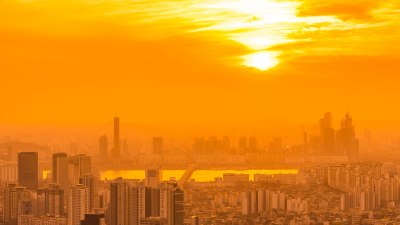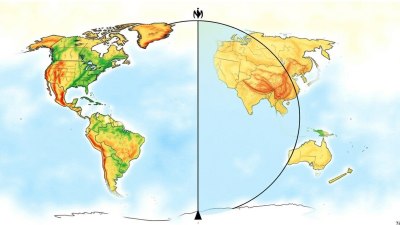Heatwave Incoming? How to Stay Safe and Cool
Learn essential tips and strategies to stay safe and cool during extreme heatwaves and prevent heat-related illnesses.

Image by lifeforstock on Freepik
Heatwaves are becoming more frequent and intense due to climate change, posing serious risks to human health, infrastructure, and the environment. As temperatures rise to unprecedented levels, staying safe and cool is no longer just a matter of comfort - it’s a necessity. Whether you’re at home, at work, or outdoors, knowing how to cope with extreme heat can prevent serious health issues like heat exhaustion, heatstroke, and dehydration. This article provides comprehensive guidance on preparing for, enduring, and recovering from heatwaves.
Understanding Heatwaves
A heatwave is a prolonged period of excessively hot weather, which may be accompanied by high humidity. The threshold for a heatwave varies by region but typically involves temperatures significantly above the average for multiple days. Urban areas are particularly vulnerable due to the “urban heat island” effect, where concrete and asphalt trap and re-radiate heat.
The dangers of heatwaves extend beyond discomfort. They can strain power grids, damage crops, worsen air quality, and increase the risk of wildfires. Vulnerable populations—such as the elderly, infants, people with chronic illnesses, and outdoor workers - are at greater risk of heat-related illnesses.
Recognizing Heat-Related Illnesses
Being able to identify the signs of heat-related illnesses is crucial for timely intervention. Common conditions include:
Heat cramps: Painful muscle cramps and spasms, usually during heavy exercise in hot conditions.
Heat exhaustion: Symptoms include heavy sweating, weakness, dizziness, nausea, and fainting. It’s a warning sign that the body is struggling to regulate temperature.
Heatstroke: The most severe form, marked by confusion, high body temperature (above 103°F or 39.4°C), dry skin, and potential loss of consciousness. Heatstroke is a medical emergency that requires immediate attention.
Preparing for a Heatwave
Preparation is key to minimizing the impact of a heatwave. Here’s how to get ready before the heat hits:
Check weather forecasts: Stay informed by monitoring local weather reports or using weather apps that issue heat alerts.
Plan ahead: Schedule strenuous activities for cooler parts of the day. Avoid outdoor work between 10 a.m. and 4 p.m., when the sun is strongest.
Stock essentials: Ensure you have plenty of water, cooling packs, and non-perishable food items. If using air conditioning, check filters and functionality ahead of time.
Protect your home: Use blackout curtains, reflective window films, or sunshades to reduce indoor temperatures. Seal windows and doors to keep cool air in and hot air out.
Establish a support network: Connect with neighbors, especially elderly or vulnerable individuals, to offer and receive help if needed.
Staying Cool Indoors
When a heatwave strikes, your home should be a refuge. Implement these strategies to maintain a safe indoor temperature:
Use air conditioning: Central or window AC units are the most effective. If unavailable, use fans in conjunction with open windows during cooler hours to circulate air.
Block heat: Close blinds and curtains during the day, especially on sun-facing windows. Use light-colored or reflective materials if possible.
Stay hydrated: Drink water frequently, even if you’re not thirsty. Avoid alcohol, caffeine, and sugary drinks that can dehydrate you.
Dress appropriately: Wear loose-fitting, light-colored clothing made of breathable fabrics like cotton or linen.
Limit heat-generating appliances: Turn off lights and electronics when not in use. Avoid cooking on stoves or ovens during peak heat hours.
Staying Safe Outdoors
If you must go outside, take precautions to reduce the risk of heat-related illnesses:
Wear sun protection: Apply sunscreen with at least SPF 30, wear wide-brimmed hats, and use UV-protective sunglasses.
Seek shade: Spend time under trees, awnings, or shaded areas. Carry a portable umbrella or sunshade if needed.
Take breaks: Rest in a cool place frequently, especially during physical exertion.
Hydrate constantly: Bring water wherever you go and sip it regularly. Consider electrolyte-replenishing drinks for extended outdoor activity.
Protecting Vulnerable Individuals
Children, the elderly, and those with preexisting health conditions are more susceptible to heat-related complications. Special care includes:
Monitoring body temperature: Check regularly, especially in infants and seniors.
Ensuring access to cool environments: Arrange for transport to cooling centers if home conditions are unsafe.
Medication awareness: Some medications increase sensitivity to heat or impair sweating. Consult healthcare providers if uncertain.
Checking in frequently: Family, neighbors, or caregivers should maintain regular contact during heatwaves.
Pets and Heatwaves
Animals also suffer during extreme heat. Take steps to protect them:
Keep pets indoors: Provide a cool, shaded space with access to water.
Avoid hot pavement: If walking pets, stick to early morning or evening hours when surfaces are cooler.
Never leave animals in cars: Even with windows cracked, car interiors can become lethal within minutes.
Emergency Responses
Despite precautions, emergencies may arise. Respond effectively with these tips:
Heat exhaustion: Move the person to a cooler place, provide water, loosen clothing, and apply cool compresses. Seek medical help if symptoms worsen.
Heatstroke: Call emergency services immediately. While waiting, cool the person with ice packs, wet cloths, or a fan.
Power outages: Prepare for blackouts by having battery-powered fans, coolers with ice, and a communication plan in place.
Long-Term Strategies
Adapting to a warming climate involves long-term changes in lifestyle and infrastructure:
Green building practices: Incorporate energy-efficient insulation, natural ventilation, and green roofs to reduce indoor heat.
Urban planning: Cities can combat heat with increased tree cover, reflective materials in construction, and expanded green spaces.
Policy and community action: Advocate for policies that support cooling centers, subsidized AC units, and public education campaigns.
Personal habits: Regularly maintain hydration, physical fitness, and awareness of climate conditions.
Heatwaves are more than an inconvenience - they're a public health concern that demands awareness, preparedness, and proactive measures. By understanding the science behind heatwaves, recognizing the symptoms of heat-related illnesses, and adopting smart strategies for staying cool, individuals and communities can reduce risks and stay safe. As global temperatures continue to rise, resilience to extreme heat will be a critical component of everyday life. Plan ahead, act wisely, and help others stay cool and protected.











